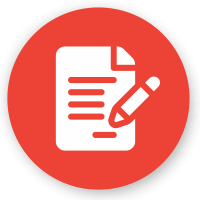 Opinion Article
Opinion Article
Put Learning in Perspective for Older Adults
Tahira I Lodhi*
Department of Medicine, Division of Geriatrics and Palliative Care, The George Washington University, USA
Tahira I Lodhi, Department of Medicine, Division of Geriatrics and Palliative Care, The George Washington University, USA.
Received Date:October 11, 2023; Published Date:October 20, 2023
Introduction
In the 1990’s, the term “Elder Friendly Hospital” was first used in an original article that appeared in healthcare management forum [1]. This article suggested that the hospitals should be made elder friendly just as they were made developmentally friendly in the past to cater to the specific needs of the pediatric populations. In 2012 American Association for Retired Persons (AARP) was developed as an affiliate of WHO’s global network of age friendly cities and communities (AFCC) [2]. Critical to the success of AFCC was its partnership with academic institutions. Age Friendly Health System (AFHS) movement stems from AFCC. In 2015 John A. Hartford Foundation partnered with the Institute for Healthcare Improvement (IHI) to develop a model for Age Friendly Health System (AFHS) [3, 4]. Their findings were synthesized into an evidence-based framework of an age friendly healthcare model, comprised of 4M’s (what Matters, Medications, Mobility and Mentation). A 5th M considered by some to be redundant is multicomplexity [5-10].
It is the academic partnership of AFCC and AFHS that matters to me most and I do not want to lose sight of it in Geriatrics teaching, be it for medical students, residents or fellows in Geriatrics and Palliative Care. The 4Ms lay out the groundwork for older adults’ care to be aligned to what matters to them and then the medications, mobility, and mentation pieces must be treated according to individuals’ discrete goals of care [11]. On every interaction with the health care system, it matters that an older adult is not on a prescribing cascade and that frailty and home stenosis be considered when prescribing medications. The mere pill burden can influence medication compliance. Mobility challenges can narrow life space, leading to social isolation, and nursing home placement. So, it matters that the providers make every effort to help improve physical health with an interprofessional team including physical and occupational therapists. Challenges with mood and cognition can lead to adverse outcomes that extend beyond emergency room visits and hospitalizations. In addition to managing the memory decline, it is important that older adults be connected to their social support networks like senior citizen centers, volunteer, or faith-based organizations, involve family members and friends, city, county and state aging departments and services. The one “M” that is not included among the 4 or 5 Ms is the M for “money”. In the material world, this is the M that drives the health care systems. As is evident from the Medicare claims data [12], the rising health care costs per capita spending increases with increasing age, peaking at mid-90’s. This cost will only continue to rise in the fee for the service environment. To provide racially and ethnically equitable care, prevent adverse outcomes, several hospital systems have demonstrated cost savings by applying of 4Ms focused care.
Geriatric curricula have started emerging in academic journals recognizing how the 4Ms approach makes it easier for learners to understand the complex needs of older adults’ care [10]. The Core Geriatric competencies outlined by the national and international regulatory agencies have evidence backed albeit untapped potential to teach care of older adults in its true perspective. To encompass the 4Ms directed care for older adults, the approach to learning and training of different levels of learners needs to be aligned accordingly. This is a theme yet to be adopted by the medical schools in general and by the regulatory authorities in particular.
Acknowledgement
None.
Conflict of Interest
No conflict of interest.
References
- (2020) Age-Friendly Health Systems: Age-Friendly Health Systems: Guide to Using the 4Ms in the Care of Older Adults
- Age-Friendly Health Systems: Guide to Using the 4M’s in the Care of Older Adults. Institute of Healthcare Improvement.
- The 4M’s Explained–Age-Friendly Care, PA. Penn State College of Nursing.
- https://www.americangeriatrics.org/sites/default/files/inline-files/GWEP%202019%20Age-Friendly%20Healthcare%20Systems_0.pdf
- Unknown author (1997) World Health 50(4): 3-30. Active ageing.
- Parke B, Stevenson L (1999) Creating an elder-friendly hospital. Autumn, Paper presented at: Healthc Manage Forum 12(3): 45-48.
- Mate KS, Berman A, Laderman M, Kabcenell A, Fulmer T, et al. (2018) Creating age-friendly health systems–a vision for better care of older adults. Healthc (Amst) 6(1): 4-6.
- (2008) Retooling for an Aging America. Building the Health Care Workforce. Institute of Medicine (US) Committee on the Future Health Care Workforce for Older Americans. Washington (DC): National Academies Press (US).
- Fulmer T, Berman A (2016) Age-friendly health systems: how do we get there? health affairs. Health Affairs Blog Grant watch.
- Phillips SC, Hawley CE, Triantafylidis LK, Schwartz AW (2019) Geriatrics 5Ms for primary care workshop. MedEdPORTAL 15: 10814.
- http://www.ihi.org/Engage/Initiatives/Age-Friendly-Health-Systems/Documents/IHIAgeFriendlyHealthSystems_GuidetoUsing4MsCare.pdf
https://www.afro.who.int/sites/default/files/2021-08/ AFR-RC7112%20Framework%20for%20implementing%20the%20priority%20actions%20of%20the%20global%20plan%20of%20action%20of%20the%20Decade%20of%20Healthy%20ageing.pdf - https:/www.cms.gov/Research-Statistics-Data-and-Systems/Statistics-Trends-and-Reports/MedicareFeeforSvcPartsAB/Downloads/NationalSum2010.pdf
-
Tahira I Lodhi*. Put Learning in Perspective for Older Adults. Glob J Aging Geriatr Res. 2(4): 2023. GJAGR.MS.ID.000544.
-
Age Friendly Health System, Healthcare Improvement, Geriatrics Teaching, Palliative Care, Physical Health
-

This work is licensed under a Creative Commons Attribution-NonCommercial 4.0 International License.






